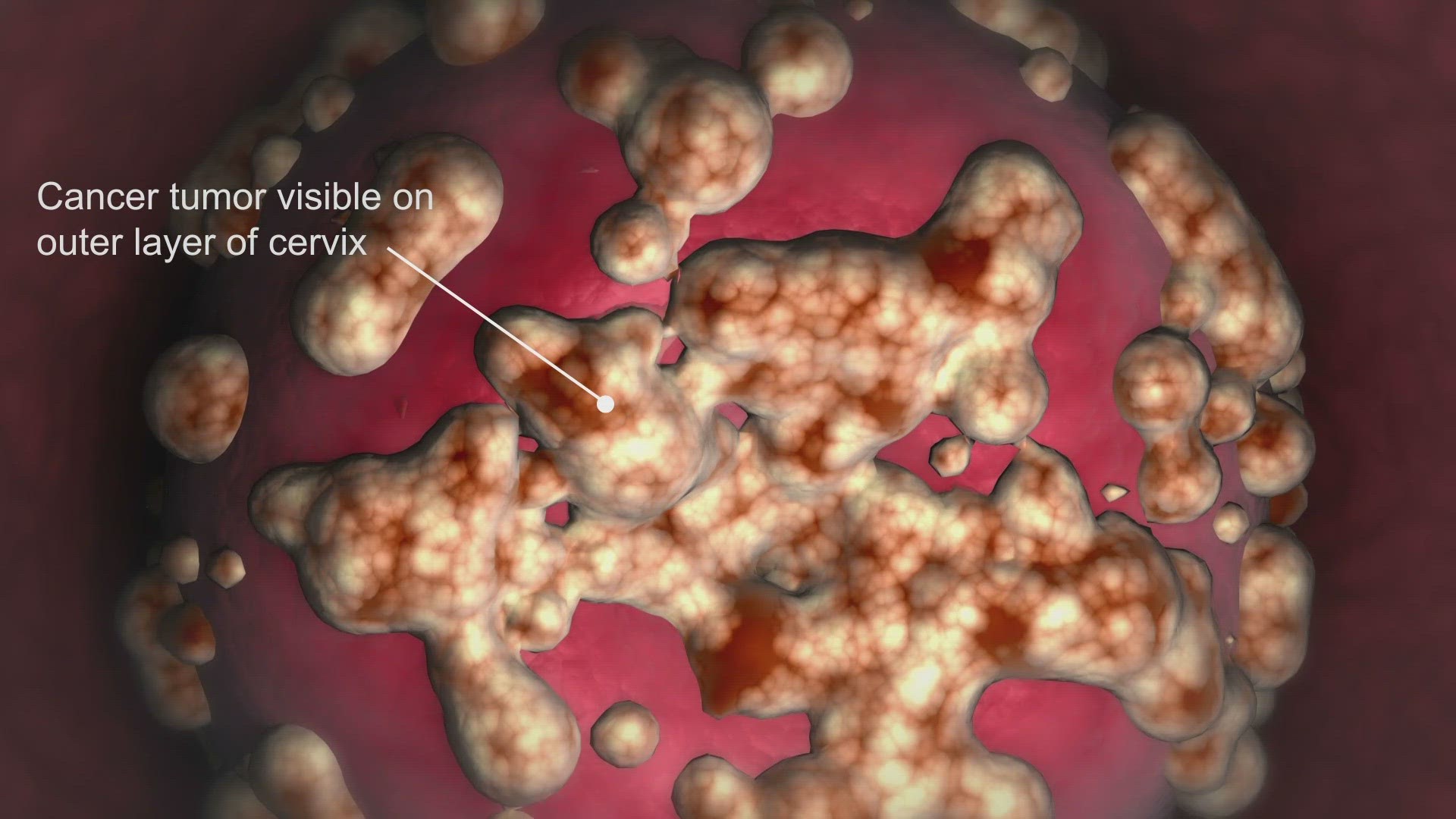CLEVELAND — More than 90% of cervical cancer is caused by HPV — the Human Papillomavirus, a sexually transmitted disease.
According to the American Cancer Society, we saw cases of cervical cancer decline by more than half in the mid-1970s to the mid-2000s, thanks to an increase in screenings known as Pap smears. However, each year among women ages 30-44, we've seen a 1.7% increase in cases. Some experts believe a change in guidelines may be a cause.
RELATED: More from WKYC's Health Hub
In the last decade, screening guidelines changed from yearly to every three to five years. The American College of Obstetricians and Gynecologists says women should begin screening at age 21, regardless of sexual activity.
Women who are 21-29 should have a Pap test alone every three years. HPV testing alone can be considered for women who are 25 to 29, but Pap tests are preferred.
Women who are 30-65 have three options for testing: They can have a Pap test and an HPV test (co-testing) every five years, they can have a Pap test alone every three years, or they can have HPV testing alone every five years.
"I think, as the guidelines have gotten more complex, it's just harder to stay compliant," Dr. Robert DeBernardo, MD, section head of the Department of Gynecologic Oncology at Cleveland Clinic, said. "Sometimes people need screening every three years or every five years, and it's really difficult to keep track of that. So then if we're missing those deadlines, then these pre-cancers can develop and even turn into cancer. So I think part of it is a failure in our screening system and I think we've seen an increase in advanced cancers, and I don't know that we really understand why that's happening."
There is some good news: Cervical cancer rates declined 11% each year for women ages 20-24, which experts say reflects the first signs of cancer prevention from HPV vaccinations that were approved by the FDA in 2006. However, they're concerned vaccine hesitancy might lower that success rate.
The CDC recommends HPV vaccination for:
- All preteens (including boys and girls) at age 11 or 12 (or can start at age 9).
- Everyone through age 26, if not vaccinated already.
Adults age 27 through 45 years who are not already vaccinated may decide to get the HPV vaccine if advised by their health care provider based on their risk of new HPV infections. However, the HPV vaccine provides less benefit in older patients.
Cervical cancer rarely has any symptoms until it becomes advanced.
"If we've caught this early enough, we can even preserve their fertility and still manage their cancer successfully," DeBernardo explained. "Radiation and chemotherapy are typically used to treat more advanced disease, something that a surgery couldn't cure. Chemotherapy combined with immunotherapy has been really, really helpful and kind of a game changer.
It's estimated 90% of men and 80% of women have HPV. Most cases go away on their own within two years, but those that linger can cause genital warts as well as cervical, vaginal, vulvar, anal, penile, and head and neck cancers.
"I would tell you every person who's been sexually active has probably been exposed at some point, and just like most viral infections, you wouldn't necessarily know you picked it up. You wouldn't necessarily know you gave it to somebody," DeBernardo said. "And for women, we could develop some pre-cancer change in the cervix and ultimately even a cancer in certain circumstances.
"So fortunately, that infection is generally cleared by most women, but some women can't clear it. Why? We don't know. We know certainly smoking promotes the growth of this virus and the incorporation into the cells, so people that smoke are a little bit more likely to develop serious infection — even cancer — down the road."

